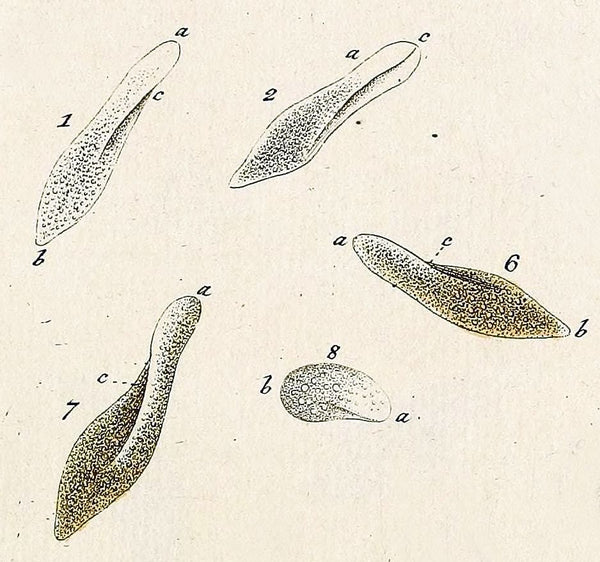- Continue Shopping
- Your Cart is Empty
Similarities and saltiness...Brackish water dynamics and challenges...
As we're entering the third month of operation of our latest brackish water, botanical-style system, I've noticed some interesting things about the way this tank runs, and how it is so similar to the blackwater systems we're all familiar with by now.
Like our "conventional" (Man, that is funny to say, huh?) botanical-style systems, the brackish system embraces the same use of decomposing leaves, wood, and botanicals, with the added variables of a rich, "mud-centric" substrate and the dynamic of specific gravity to contend with.
Interestingly, however, this type of system runs much like the blackwater, botanical-style systems that we are used to, with the exception that it is more "nutrient rich" than the blackwater tanks. The dynamics of decomposition and the ephemeral nature of leaves and such in the water are analogous in many respects, as well.
Fungi and bacteria in brackish and saltwater mangrove ecosystems help facilitate the decomposition of mangrove material, just like in their pure freshwater counterparts. Interestingly, in scientific surveys, it's been determined that bacterial counts are generally higher on attached mangrove leaves than they are on freshly-fallen leaf litter, and this is kind of interesting, because ecologists feel that attached, undamaged mangroves leaves don't release much tannin, which, as we know might have some ate-bacterial properties. However, it's also been found that materials like humic acid, which are abundant in the mangroves, stimulate phytoplankton growth there.
Interesting, right?
The leaves of mangroves, as they break down, become subject to both leaching of the compounds in their tissues, as well as microbial breakdown. Compounds like potassium and carbohydrates are commonly leached quickly, followed by tannins. Fungi are the "first responders" to leaf drop in mangrove communities, followed by bacteria, which serve to break down the leaves further.
So, in summary, you have a very active microbial community in a brackish water aquarium.

The management of a brackish tank is really surprisingly similar to that of a typical blackwater aquarium. The biggest difference is the salt and perhaps a greater interest in a rich substrate. Now, one parameter I changed since the system began was to increase the specific gravity from 1.004 to 1.008. This was done because it is a sort of "sweet spot" that many of the fishes which I am interested in (gobies, rainbow fishes, mollies, etc.) seem to fare quite well at this slightly higher S.G.
Also, I've made no secret about a desire at some future point to push things all the way up to like 1.021, and to incorporate corals and macro algae into the display, along with marine fishes! And, if I do execute this, the "creep" towards this higher S.G. will be made over a very long period of time (close to a year), so it will be advantageous for the resident fishes to adapt to full-strength marine water slowly.
I have no illusions about using live Mangrove plants (available as "propugles") to serve as "nutrient export" mechanisms as they do in nature. You've seen this touted in the hobby over the years, and it's kind of silly, if you ask me. They just grow too damn slow and achieve sizes far beyond anything we could ever hope to accommodate in our home aquarium displays as full-grown plants. We've played with this idea in saltwater tanks for decades and it's really more of a novelty than a legit nutrient export mechanism.
They will, however, reach a couple of feet or so in an aquarium over a number of years, and they may be "pruned" to some extent to keep them at a "manageable" size, similar to a "bonsai" in some respects.
And of course, no brackish water aquarium is complete without brackish-water fishes...And traditionally, that has been a bit of a challenge, in terms of finding some "different" fishes than we've previously associated with brackish aquariums. I think that this will continue to be a bit of a challenge, because some of the fishes that we want are still elusive in the hobby. New brackish-water fishes will become more readily available when the market demand is there. In the mean time, we can focus on some of the cool fishes from these habitats which are currently available to us.

However, one of the things I've found is that you need to go beyond "what the hobby articles say" and look into actual information from scientific sources about the types of habitats our target fishes actually come from. There is still a surprisingly large amount of misinformation about there concerning fishes long thought to be "brackish", when the reality is that they are often found predominantly in non-brackish habitats, with perhaps only isolated populations of fishes being brackish fishes.

There is still much to learn; much to dismiss as incorrect or unnecessary, and a lot of technique still to develop...
Isn't that fun!
Stay intrigued. Stay creative. Stay engaged...
And Stay Wet.
Scott Fellman
Tannin Aquatics











Scott Fellman
Author